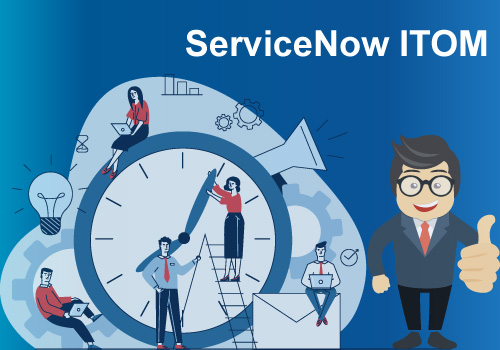Understanding Predictive Analytics in ServiceNow ITOM
Predictive analytics is transforming the way organizations make decisions in ServiceNow ITOM. By harnessing the power of machine learning algorithms, predictive analytics leverages historical data to forecast future events and trends, empowering businesses to proactively address potential issues and optimize their operations. With a deep understanding of predictive analytics capabilities in ServiceNow ITOM, businesses can gain valuable insights into their IT infrastructure, prioritize tasks based on risk analysis, and ensure seamless service delivery.
One key aspect of predictive analytics is its ability to detect anomalies within the IT environment. By continuously monitoring system metrics and performance data in real-time, predictive analytics can identify deviations from normal behavior and alert IT teams about potential problems before they impact service availability. This proactive approach allows organizations to take preventive measures, such as automated remediation or proactive maintenance activities, minimizing downtime and ensuring business continuity.
Moreover, predictive analytics provides advanced forecasting capabilities that enable better resource planning and allocation. Through analyzing historical data patterns and correlating various factors such as workload demand, incident trends, or capacity utilization rates; businesses can accurately predict future resource requirements. Armed with this information, organizations can allocate resources more effectively to meet demands while optimizing costs – ultimately resulting in improved efficiency and customer satisfaction.
Benefits of Using Predictive Analytics in Decision Making
Predictive analytics has revolutionized decision making in various industries, including IT operations management (ITOM). With its ability to analyze historical data and identify patterns, predictive analytics empowers organizations to make informed decisions based on future trends and outcomes. This not only saves time and resources but also improves the overall efficiency of an organization.
One of the key benefits of using predictive analytics is its ability to optimize resource allocation. By analyzing historical data on ticket volumes, response times, and technician availability, organizations can accurately forecast future demand for IT support services. This enables them to allocate resources strategically, ensuring that the right technicians are available at the right time to address issues promptly. As a result, organizations can deliver faster resolution times and enhance customer satisfaction.
Additionally, predictive analytics allows organizations to proactively identify potential issues before they escalate into major problems. By analyzing patterns in system performance metrics, such as CPU usage or network throughput, predictive models can detect anomalies that indicate impending failures or bottlenecks. This early warning system enables IT teams to take preventive actions like applying patches or allocating additional resources to avoid service disruptions. Ultimately, this proactive approach reduces downtime and ensures smooth operation of critical systems.
Challenges and Limitations of Predictive Analytics in ITOM
Predictive analytics has undoubtedly revolutionized decision-making processes in the field of IT Operations Management (ITOM). By harnessing the power of machine learning algorithms and statistical models, organizations can now anticipate potential obstacles and take proactive measures before they manifest. However, it is important to acknowledge that predictive analytics is not without its challenges and limitations.
One major challenge faced in predictive analytics for ITOM is ensuring data accuracy and quality. The effectiveness of predictive models relies heavily on the quality and relevance of the input data. Inaccurate or incomplete datasets can result in skewed predictions that may not accurately reflect real-world scenarios. Therefore, organizations need to invest significant efforts in data cleaning, validation, and consolidation processes to ensure accurate predictions.
Another limitation lies in the complexity of implementing predictive analytics within ITOM systems. Integrating predictive analytics tools into existing infrastructure requires substantial technical expertise and resources. Additionally, since many IT environments are dynamic and constantly evolving, maintaining an up-to-date predictive model becomes a continuous effort. Organizations must continually analyze new trends, technologies, and operational changes to adapt their models accordingly.
While there are challenges and limitations associated with predictive analytics in ITOM, it is important to overcome these hurdles as they have the potential to unlock immense value for organizations striving for more efficient operations management.
Conclusion: Transforming Decision Making with Predictive Analytics
In conclusion, the use of predictive analytics in decision making can revolutionize the way businesses operate and make informed choices. This powerful tool allows companies to tap into their data resources, identify patterns and trends, and predict future outcomes. By harnessing this predictive power, organizations can gain a competitive edge by staying ahead of market shifts, anticipating customer needs, and optimizing resource allocation.
Enhance your career with our ServiceNow ITOM training!
One key insight from implementing predictive analytics is the ability to make proactive decisions rather than being reactive. With accurate predictions about potential issues or opportunities, businesses can take timely actions to mitigate risks or capitalize on emerging trends. This proactive approach not only saves time but also enables companies to make better-informed decisions that drive positive outcomes.
Moreover, utilizing predictive analytics in decision making allows for continuous improvement through data-driven learning cycles. By analyzing historical data and incorporating feedback loops into the decision-making process, organizations can refine their models and algorithms over time. This iterative approach fosters a culture of experimentation and innovation where insights gained from each prediction inform future strategies.



